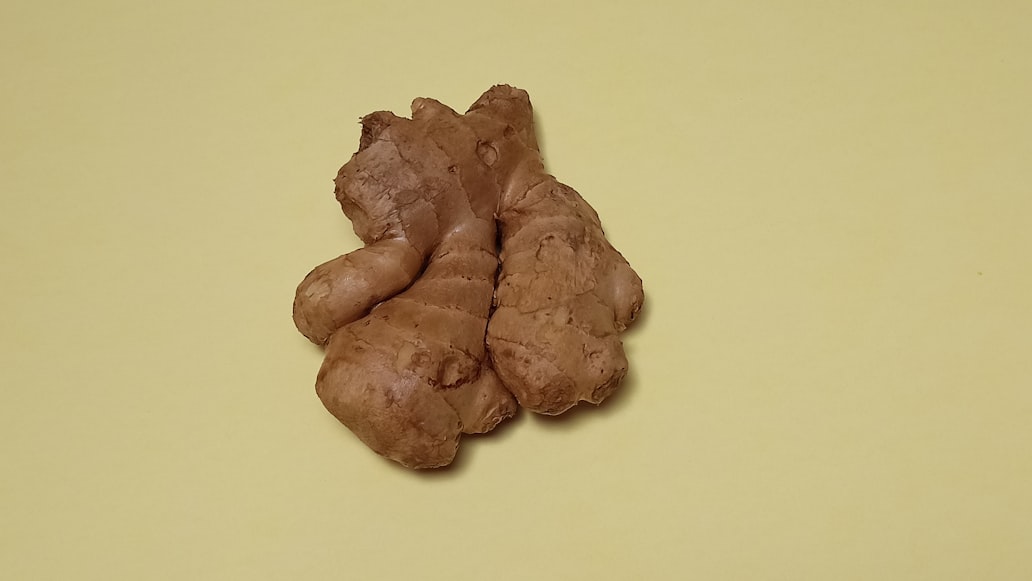Best Diet for Dogs with Allergies Outline

Introduction
– Allergies are common in dogs, affecting up to a quarter of the population.
– Allergic reactions can cause a wide range of symptoms, including skin irritation, itching, gastrointestinal upset, and respiratory problems.
– The best diet for a dog with allergies is one that eliminates the allergens that trigger their symptoms.
Identifying Food Allergies
– The most common food allergens in dogs are beef, dairy, wheat, chicken, and eggs.
– A blood test or skin prick test can be used to identify food allergens.
– Keep a food journal to track your dog’s diet and symptoms.
Elimination Diet
– Start by feeding your dog a limited ingredient diet that does not contain any of the suspected allergens.
– Observe your dog’s symptoms for several weeks.
– If symptoms improve, gradually reintroduce potential allergens to identify the trigger.
Novel Protein Diets
– If an elimination diet does not identify the allergen, try a novel protein diet.
– These diets contain proteins that your dog has never eaten before, such as venison, rabbit, or fish.
Hypoallergenic Diets
– Hypoallergenic diets are formulated with hydrolyzed proteins, which are broken down into smaller pieces that are less likely to trigger an allergic reaction.
– These diets are typically prescribed by a veterinarian.
Dietary Management
– Feed your dog the same food every day to avoid introducing new allergens.
– Avoid giving your dog table scraps or treats that could contain allergens.
– Use food-grade stainless steel bowls and wash them thoroughly after each use.
Other Considerations
– In addition to diet, other factors can contribute to allergies in dogs, such as environmental allergens (e.g., dust mites, pollens) and stress.
– Manage environmental allergens by using HEPA filters, vacuuming regularly, and avoiding dusty areas.
– Consider using a veterinarian-prescribed antihistamine or immunosuppressant medication to reduce allergic reactions.
Conclusion
Finding the best diet for a dog with allergies can be a challenging but rewarding process. By following the steps outlined in this article, you can eliminate allergens from your dog’s diet and improve their overall health and well-being. Remember to consult with your veterinarian throughout the process for guidance and support.
Introduction

Introduction
Overview of Food Allergies in Dogs
Food allergies are a common health concern in dogs, affecting up to 10% of the canine population. They occur when a dog’s immune system overreacts to certain proteins in food, resulting in an inflammatory response. Common allergens include beef, chicken, wheat, soy, and dairy products.
Impact of Allergies on Canine Health
Food allergies can manifest in various clinical signs, including:
- Skin issues: itching, redness, hair loss, chronic infections
- Gastrointestinal problems: vomiting, diarrhea, gas
- Respiratory issues: congestion, sneezing, wheezing
- Behavioral changes: hyperactivity, anxiety, lethargy
If left untreated, food allergies can lead to significant discomfort, impaired quality of life, and potential health complications such as infections and digestive disorders.
The Best Diet for Dogs with Allergies
The most effective way to manage food allergies in dogs is to identify and eliminate the offending allergens from their diet. This can be achieved through a process of elimination:
- Elimination Diet: This involves starting the dog on a highly hypoallergenic diet that contains a single protein source and a single carbohydrate source. Common options include lamb, venison, or fish with potatoes or oatmeal. The dog is then closely monitored for signs of allergies.
- Hydrolyzed Protein Diet: This type of diet uses proteins that have been broken down into very small pieces, making it less likely that the immune system will recognize them as allergens.
- Novel Protein Diet: This option involves feeding the dog a protein source that they have never been exposed to before, such as kangaroo or duck.
Additional Considerations
In addition to eliminating allergens from the diet, it is important to:
- Avoid cross-contamination: Keep pet food and bowls separate from human food and ensure that treats and chew toys do not contain potential allergens.
- Read food labels carefully: Check ingredient lists for any hidden allergens or cross-contamination warnings.
- Supplement with essential nutrients: Ensure that the dog is getting all the necessary vitamins and minerals through their diet or supplements, especially if they are on a restrictive elimination diet.
- Monitor the dog closely: Observe the dog for any changes in behavior or symptoms that may indicate a reaction to hidden allergens.
By following these recommendations, pet owners can effectively manage their dog’s food allergies and provide them with a healthy and comfortable life.
Identification of Allergens

Allergies are a common problem in dogs, affecting up to 10% of the population. While the symptoms can range from mild to severe, one of the most effective ways to manage allergies is through diet. Identifying the specific food allergens that trigger your dog’s reactions is crucial for determining the best diet.
Common Allergens in Commercial Dog Food
- Animal proteins: Beef, chicken, dairy, and lamb are the most common animal proteins that cause allergies in dogs.
- Plant proteins: Soy, wheat, and corn are also common allergens.
- Additives: Fillers, flavors, and preservatives can also trigger allergic reactions.
Methods for Testing Food Allergies
1. Elimination Diet Trial
- Remove all potential allergens from your dog’s diet for 8-12 weeks.
- Start with a limited ingredient diet that contains a single source of protein (e.g., venison) and a single source of carbohydrate (e.g., rice).
- Gradually introduce new foods one at a time, monitoring your dog for any signs of an allergic reaction.
2. Blood Test
- A blood test can detect antibodies to specific food allergens.
- This test can be helpful if your dog does not respond to an elimination diet trial.
3. Skin Allergy Test
- A skin allergy test involves injecting small amounts of common allergens into the skin.
- If your dog is allergic, a raised bump or welt will appear at the injection site.
4. Saliva Test
- A saliva test is a newer method for testing food allergies.
- It measures the levels of certain antibodies in saliva that are associated with allergic reactions.
Choosing a Diet for Dogs with Allergies
Once you have identified the food allergens that your dog is allergic to, you need to choose a diet that avoids these ingredients.
- Novel protein diets: These contain a protein source that your dog has not been exposed to before.
- Hydrolyzed protein diets: These diets contain proteins that have been broken down into smaller pieces, making them less likely to trigger an allergic reaction.
- Limited ingredient diets: These diets contain a small number of ingredients, making it easier to identify and avoid potential allergens.
It is important to note that the best diet for your dog with allergies will vary depending on their individual needs. Consult with your veterinarian to determine the most appropriate diet and to monitor your dog’s response.
Elimination Diet

Allergies in dogs are a common problem, affecting an estimated 10% of the canine population. Allergies can manifest in a variety of ways, including skin irritation, itching, digestive issues, and respiratory problems.
One of the most important steps in managing dog allergies is identifying and eliminating potential allergens. The elimination diet is a method for gradually introducing different foods to your dog while monitoring for allergic reactions.
Importance of Eliminating Potential Allergens
When your dog is allergic to something, their immune system overreacts to it. This can lead to a cascade of inflammatory responses, which can cause a range of symptoms.
Eliminating potential allergens from your dog’s diet helps to reduce inflammation and allows their immune system to return to normal. This can lead to a significant improvement in their symptoms and overall health.
Steps for Conducting an Elimination Diet
-
Choose a novel protein and carbohydrate source. This means choosing a protein and carbohydrate that your dog has never eaten before. Common novel protein sources include kangaroo, duck, venison, and lamb. Common novel carbohydrate sources include sweet potato, pumpkin, and quinoa.
-
Feed your dog a strict diet of the novel protein and carbohydrate sources for 8-12 weeks. During this time, do not give your dog any other treats, chews, or medications.
-
Monitor your dog for signs of an allergic reaction. Common signs include skin irritation, itching, digestive upset, and respiratory problems.
-
If your dog does not show any signs of an allergic reaction, you can start gradually introducing other foods to their diet. Start by introducing one new food at a time, and wait 2-3 weeks before introducing another new food.
-
If your dog shows signs of an allergic reaction to a new food, stop feeding it and consult with your veterinarian.
Conclusion
The elimination diet is a helpful way to identify and eliminate potential allergens from your dog’s diet. By following the steps outlined above, you can help to reduce your dog’s allergy symptoms and improve their overall health. Remember to consult with your veterinarian throughout the process for guidance and support.
Novel Protein Diets

Dogs with allergies often suffer from skin irritation, gastrointestinal upset, and respiratory issues. Identifying and eliminating the allergen is crucial for managing their discomfort and improving their overall health. One effective dietary approach for dogs with allergies is the novel protein diet.
Advantages of Using Novel Protein Sources
- Minimizes Allergic Reactions: Novel proteins are proteins that the dog has never been exposed to before. By introducing these proteins gradually, the immune system can avoid overreacting and triggering allergic symptoms.
- Highly Digestible: Novel protein sources are typically highly digestible, making them easier for the dog’s digestive system to process. This can reduce gastrointestinal upset and improve nutrient absorption.
- Reduces Inflammation: Allergies can lead to chronic inflammation throughout the body. Novel protein diets can help reduce inflammation by eliminating the trigger that causes the allergic response.
Examples of Novel Proteins for Dogs
- Venison: A type of deer meat that is low in fat and provides a good source of iron, zinc, and B vitamins.
- Duck: A lean protein that is rich in omega-3 fatty acids, which have anti-inflammatory properties.
- Rabbit: A hypoallergenic protein that is easy to digest and suitable for dogs with multiple allergies.
- Kangaroo: An exotic protein that is low in fat and high in zinc, which is essential for skin health.
- Hydrolyzed Protein: A pre-digested form of protein that is highly hypoallergenic and minimizes the risk of allergic reactions.
Implementation
When switching your dog to a novel protein diet, it is important to:
- Gradually Introduce: Start by adding small amounts of the novel protein to your dog’s regular food over a period of days.
- Monitor Your Dog: Observe your dog for any changes in their symptoms. If allergic reactions occur, stop feeding the novel protein and seek veterinary attention.
- Maintain a Strict Diet: Once your dog has successfully transitioned to the novel protein diet, it is essential to avoid feeding them any other proteins.
- Consider a Veterinarian’s Guidance: Consult with your veterinarian before making any dietary changes to ensure the best possible outcome for your dog.
Conclusion
Novel protein diets can be an effective dietary strategy for managing allergies in dogs. By providing your dog with proteins that they have never encountered before, you can minimize allergic reactions, improve their digestion, and reduce inflammation. Always consult with your veterinarian before implementing any dietary changes for your dog, especially if they have allergies.
Limited Ingredient Diets
Allergies are a common health concern for dogs, and diet plays a crucial role in managing the condition. Limited ingredient diets (LID) have emerged as an effective solution for dogs with food allergies or sensitivities.
Benefits of Reducing the Number of Ingredients
- Eliminates potential allergens: By reducing the number of ingredients in a diet, the risk of exposure to potential allergens is significantly reduced. This is especially important for dogs with specific food allergies.
- Easier to pinpoint triggers: If an allergic reaction occurs, a limited ingredient diet makes it easier to identify the specific ingredient that is causing the problem.
- Promotes digestion: A diet with fewer complex ingredients can be easier for dogs with sensitive stomachs to digest, reducing gastrointestinal symptoms.
- Improves overall health: By eliminating potential allergens and reducing inflammation, a limited ingredient diet can promote overall well-being and reduce the risk of secondary health issues.
Considerations When Choosing a Limited Ingredient Diet
- Choose a board-certified veterinarian: Consult with a board-certified veterinary nutritionist to determine the best diet for your dog’s specific needs.
- Consider the type of protein: Choose a diet that contains a novel protein source, such as lamb, venison, or fish, which your dog has not been previously exposed to.
- Read the ingredient list carefully: Look for diets that contain as few ingredients as possible, and avoid known allergens such as corn, wheat, soy, and dairy products.
- Monitor your dog’s response: Continue to monitor your dog’s symptoms after switching to a limited ingredient diet. If any allergic reactions occur, adjust the diet accordingly.
- Introduce new ingredients gradually: Once your dog has tolerated a limited ingredient diet for several weeks, you can gradually introduce new ingredients to identify potential triggers.
Limited ingredient diets are a valuable tool for managing food allergies in dogs. By reducing the number of ingredients and carefully selecting the right protein source, you can effectively alleviate symptoms and improve your dog’s overall health and well-being. Always consult with a veterinary nutritionist to determine the best course of action for your furry friend.
Hydrolyzed Protein Diets
Dogs with allergies often experience skin and digestive problems that can significantly impact their quality of life. Fortunately, there are specialized diets that can help manage these allergies and provide relief from symptoms. Hydrolyzed protein diets are one such option that has proven effective in many cases.
Role of Hydrolyzed Proteins in Managing Allergies
Hydrolyzed proteins are proteins that have been broken down into smaller pieces, making them less likely to trigger an allergic reaction. When a dog with allergies eats a hydrolyzed protein diet, the immune system does not recognize the proteins as foreign and does not produce antibodies against them. This can significantly reduce allergic reactions and the symptoms they cause.
Prescription Hydrolyzed Protein Diets
Prescription hydrolyzed protein diets are specially formulated diets that contain only a single source of hydrolyzed protein. This helps to ensure that the dog is not exposed to any other allergens that could trigger a reaction. Prescription hydrolyzed protein diets are typically available in both wet and dry forms.
Benefits of Prescription Hydrolyzed Protein Diets
- Reduce allergic reactions: Hydrolyzed protein diets can significantly reduce the symptoms of allergies, including itching, skin rashes, and digestive problems.
- Improve skin and coat health: By eliminating allergens from the diet, hydrolyzed protein diets can help improve the dog’s skin and coat health.
- Support digestion: Hydrolyzed proteins are easily digestible, making them suitable for dogs with sensitive stomachs.
How to Feed a Prescription Hydrolyzed Protein Diet
It is essential to follow the veterinarian’s instructions carefully when feeding a prescription hydrolyzed protein diet. Here are some tips:
- Stick to the diet: The dog should only be fed the prescription hydrolyzed protein diet and no other treats or foods.
- Transition gradually: Introduce the new diet gradually over 7-10 days to avoid digestive upset.
- Monitor for improvement: Observe the dog for signs of improvement in their symptoms. It may take several weeks for the diet to take full effect.
Conclusion
Hydrolyzed protein diets are a valuable treatment option for dogs with allergies. By reducing allergic reactions and improving overall health, these diets can help dogs live more comfortable and fulfilling lives. It is important to consult with a veterinarian before starting a prescription hydrolyzed protein diet to ensure it is the right choice for your dog’s specific needs.
Homemade Diets
Understanding Allergies in Dogs
Dogs with allergies suffer from adverse reactions to specific substances called allergens. These allergens can be found in various sources, including food ingredients, environmental triggers, and flea bites. Among these, food allergies are a common cause of skin irritation, digestive upset, and respiratory issues.
The Role of Diet in Managing Allergies
A specialized diet is crucial for dogs with allergies. By eliminating the offending allergens from their meals, you can significantly reduce the severity of symptoms and improve their overall well-being. Commercially available hypoallergenic diets can be an option, but homemade diets offer several potential advantages and drawbacks.
Potential Benefits and Drawbacks of Homemade Diets
Benefits:
- Tailored to Individual Needs: Homemade diets can be customized to meet the specific dietary requirements of your allergic dog.
- Control over Ingredients: You have complete control over the ingredients used, ensuring that only safe and allergen-free foods are included.
- Fresh and Natural: Homemade diets often incorporate fresh, whole ingredients that provide essential nutrients and antioxidants.
Drawbacks:
- Time-Consuming: Preparing homemade meals requires significant time and effort.
- Balancing Nutrients: Ensuring a balanced and complete diet can be challenging, especially if you lack nutritional expertise.
- Potential Contaminants: If ingredients are not handled or stored properly, homemade diets can introduce harmful bacteria or parasites.
Steps for Creating a Balanced Homemade Diet
1. Consult with a Veterinary Nutritionist:
Before embarking on a homemade diet journey, it’s essential to consult with a veterinary nutritionist or certified dog nutritionist. They can guide you on appropriate ingredients, portion sizes, and potential risks.
2. Select a Protein Source:
The primary protein source in your dog’s diet should be a novel protein they have not been exposed to before. Common hypoallergenic protein sources include venison, rabbit, duck, or fish.
3. Choose Carbohydrates:
Carbohydrates provide energy and fiber. Choose grains that are low in allergens, such as brown rice, quinoa, or sweet potato.
4. Add Fruits and Vegetables:
Fruits and vegetables offer vitamins, minerals, and antioxidants. Allergen-free options include apples, bananas, blueberries, carrots, and green beans.
5. Include Healthy Fats:
Healthy fats support skin and coat health and provide essential fatty acids. Add small amounts of olive oil, coconut oil, or fish oil.
6. Monitor and Adjust:
As with any diet, monitor your dog’s health closely for any changes or improvements. Make adjustments as needed based on their response and the recommendations of your veterinary nutritionist.
Conclusion
Homemade diets can be a viable option for dogs with allergies. While they offer potential benefits, they also require careful planning and execution. By following these steps and seeking expert guidance, you can create a balanced and allergen-free diet that supports your dog’s health and well-being.
Supplements and Additives
Dogs with allergies face unique nutritional challenges that can affect their overall well-being. While a balanced diet is essential for managing allergies, certain supplements and additives can provide additional support.
Beneficial Supplements for Dogs with Allergies
Omega-3 Fatty Acids:
* These essential fatty acids have anti-inflammatory properties that can help alleviate skin irritation and itching associated with allergies.
Probiotics:
* Probiotics promote a healthy gut microbiome, which can strengthen the immune system and reduce allergic reactions.
Vitamin E:
* An antioxidant that protects cells from damage caused by free radicals, which can trigger allergies.
Quercetin:
* A bioflavonoid that inhibits histamine production, a chemical that causes allergic symptoms.
Bromelain:
* An enzyme found in pineapples that has anti-inflammatory and anti-itching properties.
Cautions Regarding Supplements and Additives
While supplements can provide benefits, it’s important to approach their use with caution:
1. Consult with a Veterinarian:
* Always consult with your veterinarian before giving your dog any supplements or additives. They can advise on the appropriate dosage and potential interactions with other medications.
2. Quality and Safety:
* Choose supplements from reputable brands that have undergone testing for potency and purity. Avoid unapproved or low-quality supplements.
3. Allergic Reactions:
* Some supplements may contain ingredients that could trigger allergic reactions in your dog. Monitor your dog closely after introducing a new supplement.
4. Interactions:
* Certain supplements may interfere with the absorption or effectiveness of other medications. Inform your veterinarian about all supplements you’re giving your dog.
5. Overdosing:
* It’s important to follow the recommended dosage on the supplement label. Overdosing can lead to adverse effects.
6. Long-Term Effects:
* Some supplements may not be suitable for long-term use. Consult with your veterinarian about the potential risks and benefits of long-term supplementation.
By understanding the potential benefits and cautious use of supplements and additives, you can provide additional support for your dog with allergies. Remember, a balanced diet and proper veterinary care remain the cornerstone of managing doggy allergies effectively.
Management and Monitoring
Long-Term Management of Food Allergies
Once your dog has been diagnosed with a food allergy, it is crucial to establish a long-term management plan to prevent future flare-ups. This plan typically involves:
- Strict adherence to a hypoallergenic diet: Your veterinarian will recommend a prescription food specifically designed for dogs with food allergies. These diets contain novel proteins and carbohydrates that your dog’s immune system has not previously been exposed to.
- Avoiding triggers: Pay close attention to all ingredients in your dog’s food, treats, and supplements. Avoid any foods that contain the allergen your dog is allergic to.
- Environmental management: While food allergies are the most common type of allergy in dogs, they can also be triggered by environmental factors such as pollen, dust mites, and mold. Reduce your dog’s exposure to these triggers by keeping your home clean, using air purifiers, and avoiding areas where they are present.
- Regular veterinary check-ups: Schedule regular appointments with your veterinarian to assess your dog’s progress and adjust their treatment plan if necessary.
Signs to Watch For and Veterinary Follow-Up
It is important to monitor your dog for any signs that their allergies may be flaring up. These signs may include:
- Skin irritation: Redness, itching, swelling, or scabs on the skin
- Gastrointestinal issues: Vomiting, diarrhea, or loss of appetite
- Respiratory problems: Sneezing, coughing, or wheezing
- Behavioral changes: Increased anxiety or lethargy
If you observe any of these signs, contact your veterinarian immediately. The underlying cause may need to be further investigated, and your dog’s treatment plan may require adjustment.
Conclusion
Managing food allergies in dogs requires a long-term commitment to strict diet adherence, environmental management, and regular veterinary follow-up. By following these recommendations, you can help reduce your dog’s symptoms and improve their overall quality of life. Remember to work closely with your veterinarian to develop a personalized plan that meets your dog’s specific needs.



















